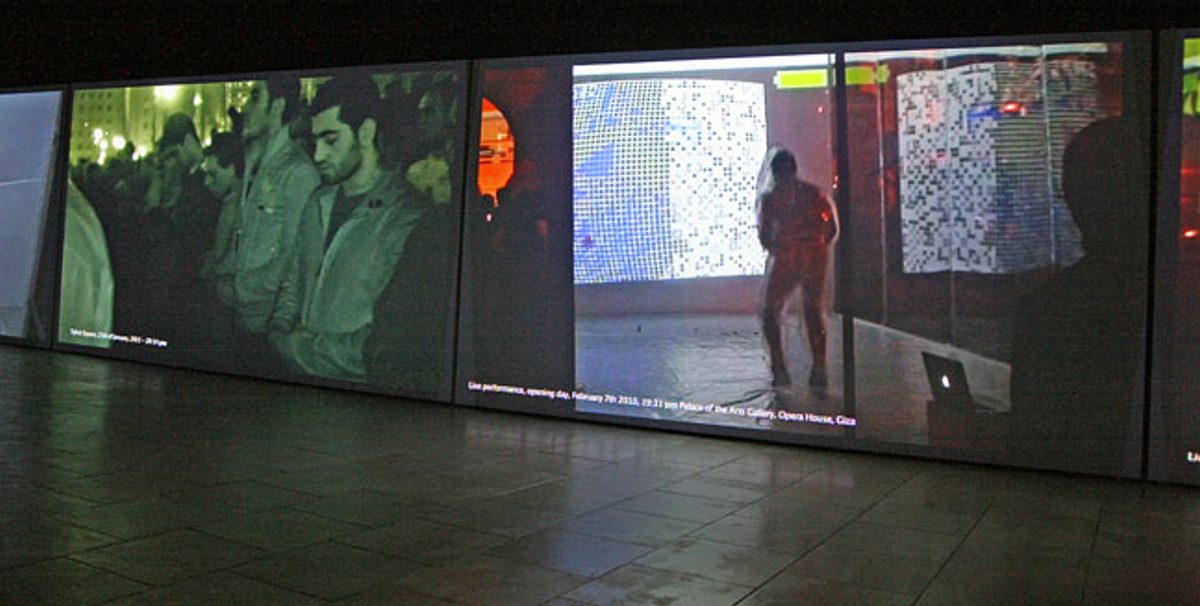At the Venice Biennale in 2011, the Egyptian pavilion reflected the turmoil of the Arab Spring, which, in the past two-and-a-half years, has engulfed much of the Middle East. It was a potent and moving show: the independent curator Shady El Noshokaty created a paean to his friend Ahmed Basiony, who was killed in Tahrir Square that year while demonstrating against the former president, Hosni Mubarak.
It seems unlikely that a similarly emotive work will appear this year. The Egyptian presentation in the Giardini is noticeably more muted: a joint installation by the sculptor Khaled Zaki and the mosaic artist Mohamed Banawy will focus on “the infinite two cycles in the universe”, namely nature and “the continuous human walk on earth”, they say. The pavilion’s selection process has been controversial: the Egyptian ministry of culture asked Mohamed Talaat, the co-founder of Gallery Misr in Cairo, to be the curator but he refused because the artists had already been selected. “The curator has no role and will just be an assistant,” he says, adding that the culture ministry has only contributed €20,000 to the project.
Questions also surround the Syrian pavilion, located on the Isola di San Servolo; particularly, why the number of Italian artists, at least five including Lidia Bachis, dwarfs that of Syrian representatives, among them the Damascus-born Al Samman Nabil. The Biennale website names Christian Maretti, an Italian publisher, as the Syrian pavilion’s commissioner, just as he was in 2011. Khaled Samawi, the co-founder of Ayyam Gallery, which has spaces in Damascus, Beirut, Dubai and London, says that Maretti has signed an agreement with the Syrian culture ministry, according to which “[the ministry] gave him free rein to choose Italian artists with whom he is connected as long as he funds the pavilion”. Samawi adds: “It is a shameful example of individuals capitalising on dubious connections and divisions within Syria, while the country is torn apart.” Maretti declined to comment.
Syria is not the only war-torn state to turn to foreign specialists; the curator of the Iraqi pavilion, based at Ca’Dandolo on the Grand Canal, is Jonathan Watkins, the director of Ikon gallery in Birmingham, UK. He travelled through cities such as Basra and Baghdad in an armoured car to find artists whose works reflect post-war Iraq’s shattered infrastructure. Among the 11 artists are Jamal Penjweny, whose images of Iraqis holding a portrait of Saddam Hussein over their faces are a potent reminder of the late dictator’s lasting impact, and the satirical cartoonist Abdul Raheem Yassir, who uses humour to defuse the grisly reality of post-conflict Iraq.
In 2011, the pavilion was backed by the Iraqi ministry of culture, but this year it is overseen by the Ruya Foundation for Contemporary Culture, a non-profit, non-governmental organisation established in 2012. Why did it approach Watkins rather than a curator associated with the region? “There are no go-to curators or critics in Baghdad or Basra or Erbil to provide guidance,” a spokeswoman says.
Two Middle Eastern artists known for politically charged works are showing in the Arsenale. A video by Akram Zaatari, representing Lebanon, will take “the political and sociological context of Lebanon and its recent 30-year history as a case study”, according to the co-curator Till Fellrath, though he adds that the work’s message is “humanitarian and connects to anyone regardless of origin”. Waheeda Mallulah, meanwhile, is one of three artists selected by the Bahrain ministry of culture for its first show, “In a World of Your Own”. A statement says that through “playful exploration” and “careful staging”, her photographs address “deeper issues regarding the role of women, dress and religion in her more traditional community”. Under the watchful eye of Sheikha Mai bint Mohammed Al Khalifa, the commissioner and Bahraini minister of culture, it remains to be seen how radical Mallulah’s art will be at the Biennale.


